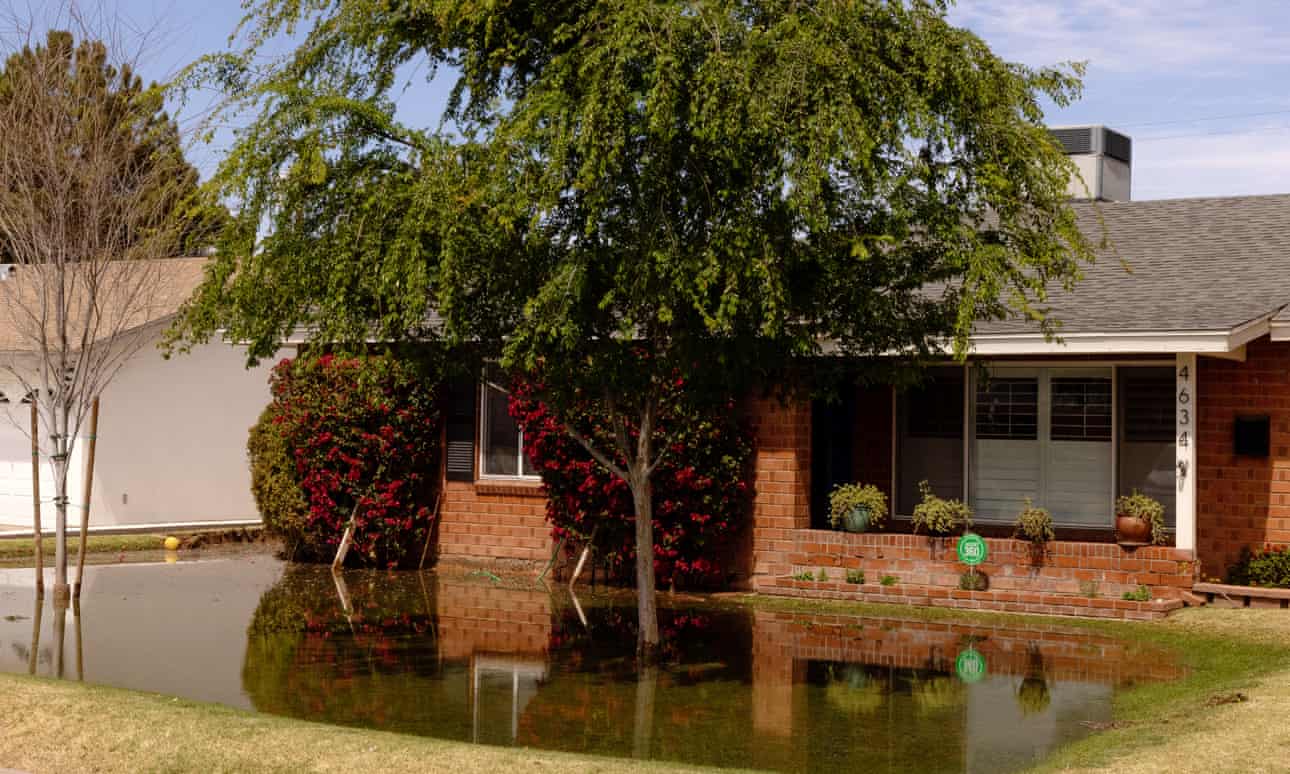Phoenix has a deep history of environmental injustice.
Low-income communities and communities of color suffer disproportionately from Phoenix’s extreme heat, a problem compounded by water access and affordability.
No one appears to have studied how flood irrigation correlates with wealth or race. Research indicates white, wealthier people are more likely to live in grassier, shadier neighborhoods. In one study from 2008, local researchers found that during one heatwave, the temperature discrepancy between a wealthier neighborhood and a poorer one in Phoenix hit 13.5F. Trees and grass accounted for the difference.
Whiter, wealthier people were more likely to have more vegetation, and in turn, cooler climates, the authors found. That study did not examine how greener areas were watered, but any irrigation has costs. “Affluent people ‘buy’ more favorable microclimates,” the researchers concluded.
Meet Arizona's water one-percenters

by Elizabeth Wang Whitman
“You have to have irrigation boots, girl,” she says during a video tour of her property in Mesa, a suburb of Phoenix, Arizona. She flips her camera to reveal green grass, then tilts her phone skyward at four towering palm trees. As she walks, she pans across pecan, pomegranate, and citrus trees – lemon, orange, a grapefruit sapling. A tortoise, between 80 and 100lb, lumbers toward her, chewing. “There’s Simba,” Upton says. “Hey buddy! What is that, Simba? You can’t eat it.” She pats him affectionately on the head.
This lush half-acre is Upton and her husband’s oasis, fed by flood irrigation in the heart of the Sonoran desert.
Upton is among a handful of homeowners – by one accounting, just 1% – of metro Phoenix’s 4.4 million people to receive flood irrigation. The Salt River Project, the area’s largest supplier of such water, delivered almost 60,000 acre-feet of water to that small number of residents in 2019, or 7.5% of the water it delivered that year to all customers combined.
In that same year, the Salt River Project sent 36,003 acre-feet to Phoenix-area schools, parks, golf courses and churches (and 63,500 acre-feet to farmers – another story entirely) to irrigate trees and turf.
To provide scale for that type of usage: one acre-foot of water can sustain three Phoenix-area families for a year. The entire city of Chandler, Arizona, population 261,000, uses 60,000 acre-feet of water annually.
The water, untreated, is cheap. To flood her yard twice a week, except in winter, Upton pays $100 a year to Salt River Project and $350 to her subdivision’s irrigation water delivery district, a special taxation district she helped start. If it were city water, “we could never afford this,” Upton says. “It’d be over $600 a month.”
The total amount of raw water to irrigate lawns and trees in private homes, parks and schools has changed little in the last 36 years. Some people deem the practice a harmless anomaly. Others defiantly defend it against a backdrop of conservation messaging and intensive planning for climate change, drought and future water scarcity.


No comments:
Post a Comment